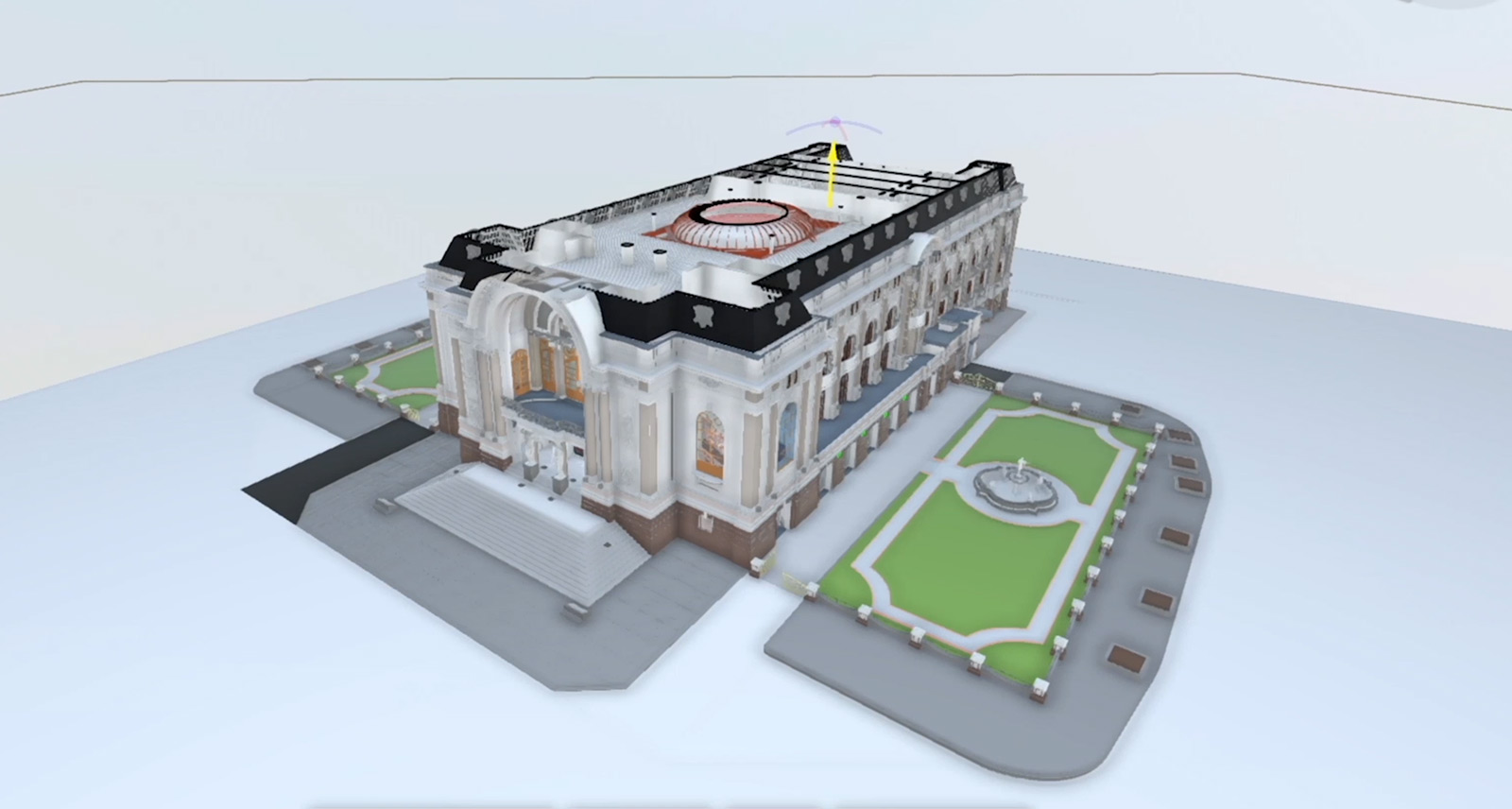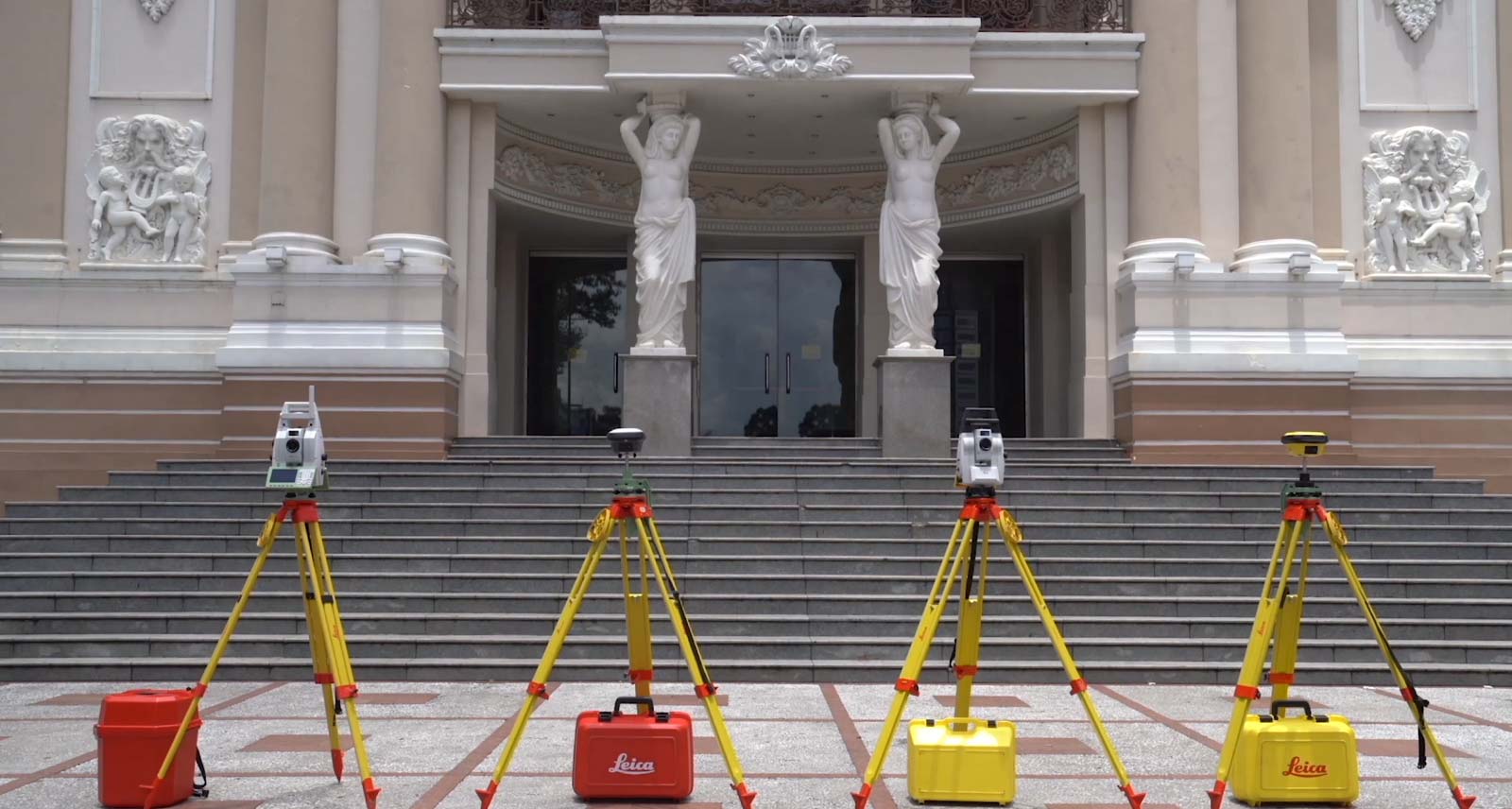Heritage-BIM model to future proof an Opera House
Case study

Author: Hazlinda Mohd Nuron
The Saigon Opera House, one of Ho Chi Minh City’s most elegant and historical cultural assets, has a new digital identity to manage, preserve and protect this iconic building.
Built in 1898 by architect Eugene Ferret, and modelled on the Petit Palais in Paris, the much-loved municipal performing arts venue is also a heritage tourist attraction. The building was identified as being at risk because of its location in the heart of South Vietnam’s busy city.
Work carried out on the Metro beneath the theatre might further degrade the historic structure. Accurate digital condition surveys were needed to help the authorities successfully manage future renovations or even a complete reconstruction.
News of the fire that almost destroyed Notre Dame Cathedral in Paris gave the project an added impetus.
The General Director of Vietnam’s Portcoast Consultant Corporation, Mr Pham Anh Tuan, took responsibility for the work, assembling a 30-strong survey and engineering team to tackle it.
With vast previous experience of Leica Geosystems products, Mr Tuan chose a fleet of Leica Geosystems’ total stations, GNSS and 3D laser scanners, together with the latest integrated software, to deliver the project’s ambitious goals.
A three-phased approach

The first phase of work was to construct a base heritage-BIM model. As the original design documents and structural drawings had been lost over time, two data sets from different sources were required.
The raw spatial data of the existing structures was collected using geodetic equipment, cameras, UAV and 3D laser scanners, while the technical, historical information was sourced from national archives and research centres.
The second phase involved the modelling and processing of point cloud data to construct a 3D digital representation of the current status of the theatre. Additional information on colours, materials, patterns, as well as details of origin, history and cultural significance were integrated to create a complete BIM model.
The third and final phase utilised the BIM model to create a precise 3D visualisation, which could be shared with stakeholders, using Leica TruView and JetStream Viewer.
Mr. Tuan said, “The digitalised deliverables could only be achieved with cutting edge equipment and software. Using the resulting BIM model we created a precise reality capture visualisation using VR (Virtual Reality), AR, (Augmented Reality), and MR (Mixed Reality) techniques, ultimately sharing this with stakeholders and the public through an impressive interactive virtual tour, featuring an accurate 3D model of the Saigon Opera House.”
The extensive Leica Geosystems software portfolio was used in all phases of the project: Leica Infinity for georeferencing the point cloud data, Leica Cyclone 3DR to create the digital model of the statues and reliefs and the Leica CloudWorx plug-in for Revit to add the top roof frame truss system to the BIM model.
Capturing reality inside and out

Using a Leica Nova TS60, two GNSS GS18 T, one iCON iCR80 and two iCON gps70, the survey team set up over 350 georeferenced scanning stations to accurately capture point cloud data, from the stage and auditorium to the roof dome, basement, and outer walls.

As it was not possible to physically climb onto the roof, a crane was used to lift a Leica ScanStation P50 3D laser scanner into position to capture up to 1km of the area around the opera house in High-Dynamic Range (HDR) imagery and survey-grade quality.
For the complex interior geometry, particularly in the narrow attic and basement spaces, where fast scanning time, accuracy, stability and manoeuvrability were essential, the Leica RTC360 and the Leica BLK360 were ideal.

Four Leica RTC360 3D laser scanners were used for the columns, statues, reliefs, patterns, chandeliers and exterior details. The light and compact design of the BLK360 overcame the challenge of scanning the air-conditioning system located in the confined attic space.
“The accuracy of measurement and the density of the measured points was a key factor in our choice of hardware. High efficiency, flexibility and reliability of this equipment saved us time and manpower in every aspect of the project from initial control and georeferencing to the laser scanning and registration process,” said Mr. Tuan.
A priceless return on investment
Confidence in Leica Geosystem’s digital technology amongst Portcoast’s young engineering team has engendered a renewed sense of pride in the history and cultural values the building represents.
Mr. Tuan explains, “In the event of a catastrophe, the entire structure could be rebuilt from the digital record. When necessary in the months and years to come, the digitalised data can also be used to print 3D models needed for high accuracy casting to replicate the original decorative features. Digitalisation has ensured the beauty and majesty of the Saigon Opera House will continue to inspire future generations of residents and visitors to the city.”
Following the success of this heritage project, the municipal authorities now have scope to consider applying digital documentation methods to some 150 buildings of historical, cultural and artistic significance in Ho Chi Minh City.























